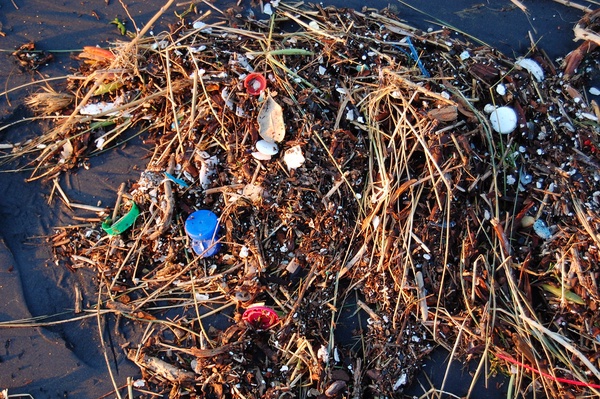A Successful 20,000lbs Removed From The Great Pacific Garbage Patch

Pieces of plastic and debris found in a chunk of the patch.
October 22, 2021
The Great Pacific Garbage Patch, located in the center of the North Pacific Ocean, holds tons of garbage that leaves the ocean polluted. It extends from Asia, North America, and South America, causing harm to the environment. The patch stretches at least 617,000 square miles from California and Japan, meeting at the Hawaiian Islands. The patch is considered a gyre, formed by wind gusts and transformed into whirlpools, picking up debris left in the ocean. There are many other gyres found around the Indian Ocean and Atlantic Ocean, which do collect debris and trash, but are not as impactful or well known as the Great Pacific Garbage Patch.
A 2018 research study shows nearly 79,000 tons of plastic was found inside the patch, with 1.8 trillion pieces of debris alongside. It stretched over a nearly 1.6 million-square-kilometer area. For years, the thought of the garbage dump ever clearing seemed to be impossible. It’s long lasting effects have become the new normal.
Great news comes after all, as The Ocean Cleanup, (a nonprofit engineering environmental organization) has invented a mesmerizing machine, called System 002 (nicknamed Jenny). System 002 is brought to the ocean to clean up the bits and pieces of plastic that flows around. It uses two boats that guide U-shaped barriers in the polluted areas of the patch. A series of tests had been done over the course of 12 weeks, each one consisting of the system being taken offshore and safely gathering plastic from the ocean.
Once the system had finished its final test in the 12 week period, a great announcement was made on the organization’s Twitter page. The system had cleaned up more than 19,841 pounds of trash, mostly being plastic and debris. The trash that was picked up during the tests was then recycled.
The Ocean Cleanup still strives to pick up and recycle the plastic and debris found in the ocean. They can only do so much, with a new 2020 study by Pew Charitable Trusts (Ocean Conservation group) revealing 24 trillion pounds of plastic being thrown into the ocean. A massive spike from 2018.
Without immediate action, many people will likely not have organized waste collection by 2040. “Closing this gap would require connecting more than 500,000 people to collection services per day until 2040,” states Pew. It may seem impossible, but soon enough, it is likely that a solution will be made, having many contribute to the collection of waste in the ocean.

